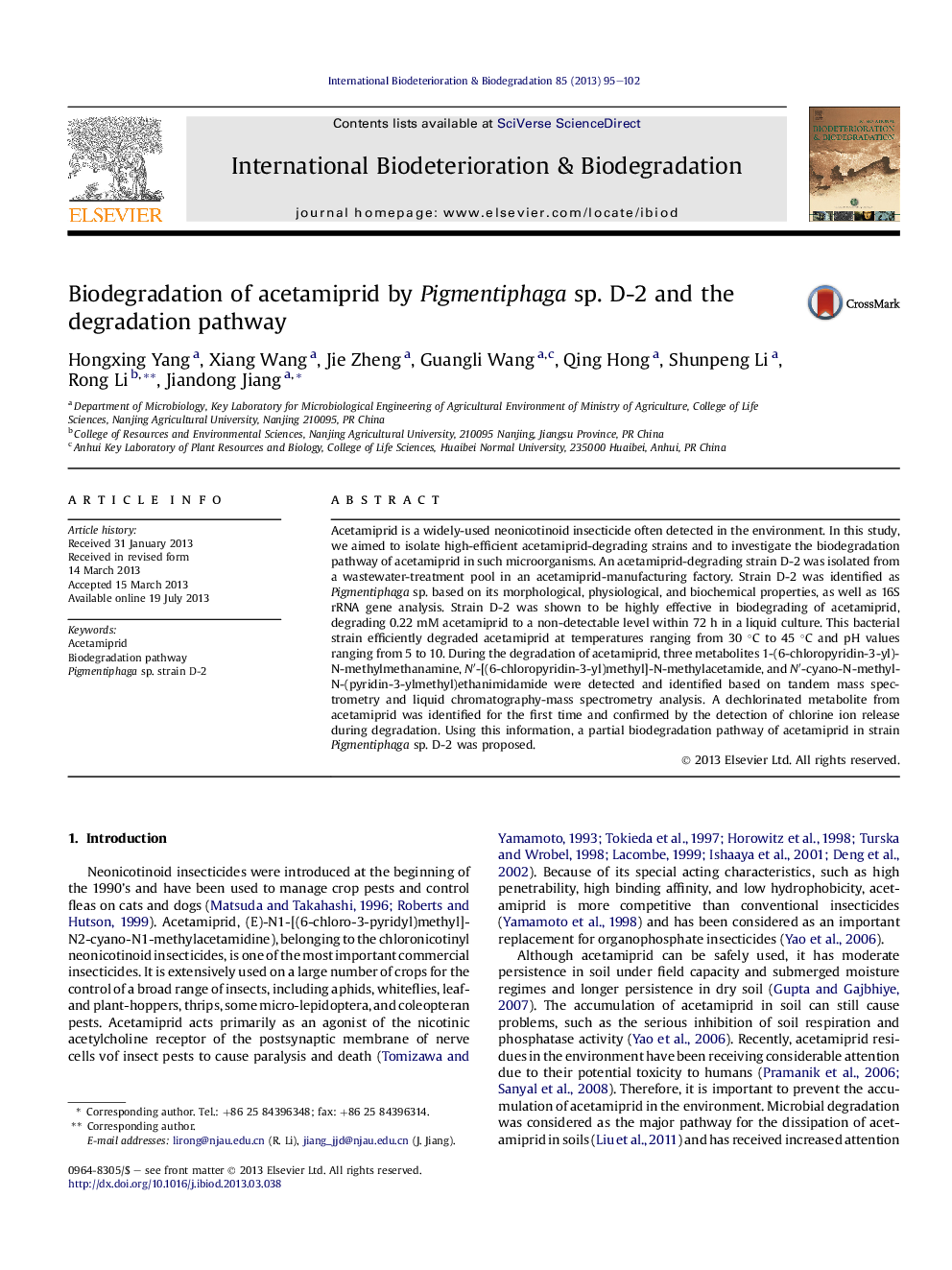| Article ID | Journal | Published Year | Pages | File Type |
|---|---|---|---|---|
| 6289272 | International Biodeterioration & Biodegradation | 2013 | 8 Pages |
Abstract
Acetamiprid is a widely-used neonicotinoid insecticide often detected in the environment. In this study, we aimed to isolate high-efficient acetamiprid-degrading strains and to investigate the biodegradation pathway of acetamiprid in such microorganisms. An acetamiprid-degrading strain D-2 was isolated from a wastewater-treatment pool in an acetamiprid-manufacturing factory. Strain D-2 was identified as Pigmentiphaga sp. based on its morphological, physiological, and biochemical properties, as well as 16S rRNA gene analysis. Strain D-2 was shown to be highly effective in biodegrading of acetamiprid, degrading 0.22 mM acetamiprid to a non-detectable level within 72 h in a liquid culture. This bacterial strain efficiently degraded acetamiprid at temperatures ranging from 30 °C to 45 °C and pH values ranging from 5 to 10. During the degradation of acetamiprid, three metabolites 1-(6-chloropyridin-3-yl)-N-methylmethanamine, Nâ²-[(6-chloropyridin-3-yl)methyl]-N-methylacetamide, and Nâ²-cyano-N-methyl-N-(pyridin-3-ylmethyl)ethanimidamide were detected and identified based on tandem mass spectrometry and liquid chromatography-mass spectrometry analysis. A dechlorinated metabolite from acetamiprid was identified for the first time and confirmed by the detection of chlorine ion release during degradation. Using this information, a partial biodegradation pathway of acetamiprid in strain Pigmentiphaga sp. D-2 was proposed.
Keywords
Related Topics
Life Sciences
Environmental Science
Environmental Science (General)
Authors
Hongxing Yang, Xiang Wang, Jie Zheng, Guangli Wang, Qing Hong, Shunpeng Li, Rong Li, Jiandong Jiang,
